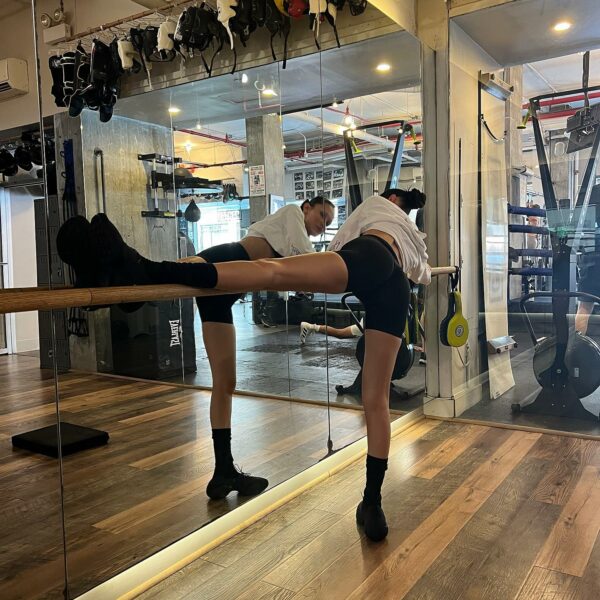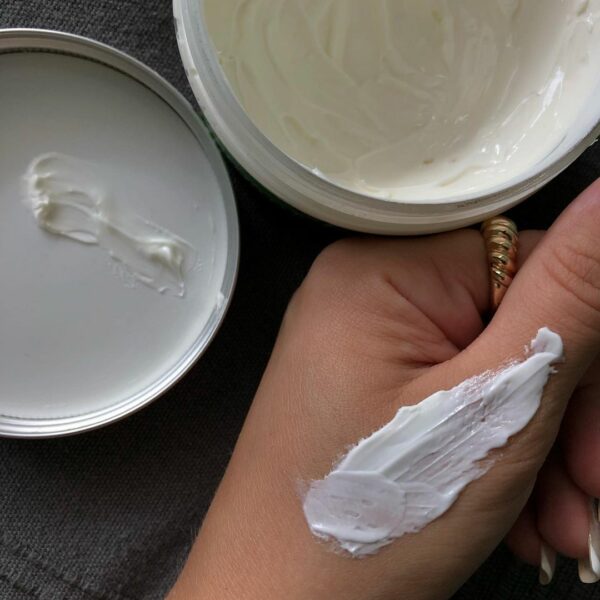TIL: looking down at your phone when texting/scrolling through TikTok places about 60 pounds of force on your neck—that’s a lot, especially when you consider that good posture only places about 10 pounds of force on the neck. All this extra strain can lead to tech neck (sometimes called text neck). It isn’t an official medical diagnosis, but refers to neck problems related to technology use. And given that cell phones and tech are everywhere, obvs this is a condition that’s pretty common. So we tapped orthopedic surgeon Brian A Cole, M.D., FAAOS, to share tips for getting rid of tech neck.
“Cell phones and various mobile devices are used constantly in our daily lives,” Dr. Cole says. “Unfortunately, most of us do not use an ergonomic setup and repetitively flex our necks.” This places increased stress on the neck musculature, which can cause pain in the neck, upper back, and shoulder, as well as other effects like rounded shoulders, reduced mobility, and headaches.
“The neck is a stalk that holds up our head, which weighs about 15 lbs, the size of a bowling ball,” Dr. Cole explains. “When we stand up straight, the weight of the head falls directly over the neck. The neck muscles perform a balancing act and contract just enough to maintain the position of the neck.” This places about 10-12 pounds of force on the neck.
“However, when we flex the neck, the demands of these muscles increase substantially. In fact, for every ten degrees, the force on the neck increases 10 pounds,” Dr. Cole says. “When the neck is fully flexed, the typical position while texting, the force on the neck is approximately 60 pounds.” Um, yeah, no wonder that causes problems.
The good news: “If there are no associated symptoms such as numbness, tingling, weakness, or pain in the extremities, text neck can be easily treated,” Dr. Cole says, adding that NSAIDS such as ibuprofen in combination with acetaminophen can be helpful to alleviate pain.
“Once the pain has been alleviated, the next step is to establish your range of motion,” Dr. Cole says. “Exercises such as: rolling the head in a circular motion, flexion/extension, and side bending will help to loosen up the muscles. The muscles in the neck work hand in hand with the muscles of the shoulder. It is important to incorporate shoulder exercises into your routine. Shoulder elevation and bringing the shoulder as far back and as far forward is recommended. You can combine these in a circular motion. Chin tuck exercises are also helpful.”
Dr. Cole says that around half of patients with tech neck resolve their pain within two weeks, and 90 percent resolve it within six to eight weeks. “Once you are better, it is important to think about prevention,” he says. “You can start with your workspace. While working with your computer or mobile device, it is important to elevate these to eye level. This will translate into less neck flexion and avoidance of undue stress on the neck.”
The content provided in this article is provided for information purposes only and is not a substitute for professional advice and consultation, including professional medical advice and consultation; it is provided with the understanding that Poosh, LLC (“Poosh”) is not engaged in the provision or rendering of medical advice or services. The opinions and content included in the article are the views of the interviewee only, and Poosh does not endorse or recommend any such content or information, or any product or service mentioned in the article. You understand and agree that Poosh shall not be liable for any claim, loss, or damage arising out of the use of, or reliance upon any content or information in the article.
Up next, be the first to know our weekly content and sign up for our Poosh newsletter.






































